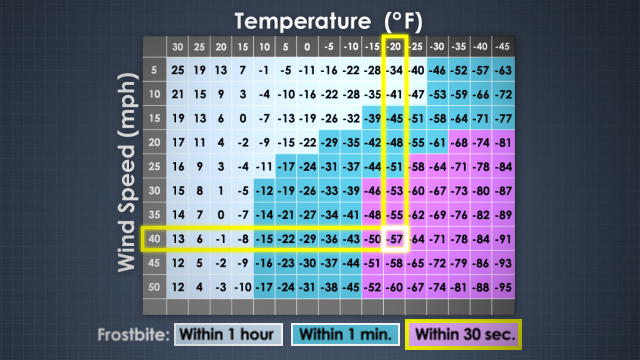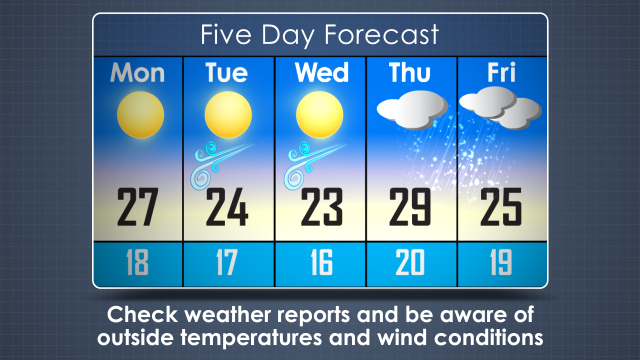




Cold Stress
People who are exposed to cold or wet conditions sometimes can’t keep their body warm, which leads to cold stress. This course discusses the factors that increase cold stress as well as what frostbite, trench foot, and hypothermia are and how they are treated. This course also illustrates safe work practices to help with the prevention of cold stress.
Request a demoCourse Details
Learning Objectives
By the end of this course, you will be able to:
- Identify the three types of cold stress, which are frostbite, trench foot, and hypothermia
- Describe the primary causes of cold stress
- Identify the factors that affect how a person tolerates cold temperatures
- Describe the signs, symptoms, and treatments for all three types of cold stress [and]
- List the methods to prevent cold stress
Specs
| Course Level | Intermediate |
| Languages | English, Spanish |
| Compatibility | Audio, Video |
| Based on: | Industry Standards and Best Practices |
Key Questions
What causes cold stress?
Cold stress is primarily caused by cold temperatures, but other risks include strong winds (which contributes to wind chill), rain, ice, snow, hail, and other sources of wetness.
What is the cold stress equation?
Cold temperatures plus wind speed plus wetness equals injuries, illnesses, and cold-related problems.
What serious conditions can cold stress lead to?
Cold stress can lead to frostbite, trench foot, and hypothermia, all of which are serious.
What is frostbite?
Frostbite is a type of cold stress in which a person’s skin, or the tissues underneath, freeze. This can happen when a person is exposed to cold temperatures and the body loses heat faster than it can produce it.
What is trench foot?
Trench foot is caused when feet are exposed to wet and cold conditions for long periods. This is also known as immersion foot.
What is hypothermia?
Hypothermia is a type of cold stress in which the core body temperature drops from the normal 98.6 degrees F (37 °C) to 95 °F (35 °C) or below. Hypothermia can lead to death.
Sample Video Transcript
People exposed to cold and/or wet conditions sometimes can’t keep their body warm enough. This is known as cold stress. Cold temperatures are the primary cause of cold stress. Other factors that increase the risk include strong winds that cause temperatures to feel colder than they are, this is known as the wind chill, and rain, ice, snow, hail, or other sources of wetness.
Additional Resources
- U.S. Department of Labor’s Occupational Safety & Health Administration (OSHA) – www.osha.gov
- OSHA Safety and Health Topics – https://www.osha.gov/SLTC/emergencypreparedness/guides/cold.html
- National Institute for Occupational Safety and Health (NIOSH) – www.cdc.gov/niosh/
- NIOSH Workplace Safety & Health Topics – http://www.cdc.gov/niosh/topics/coldstress/default.html
Course Applies To
Demos + Pricing
Learn more about our courses, get pricing, and see our platform.











